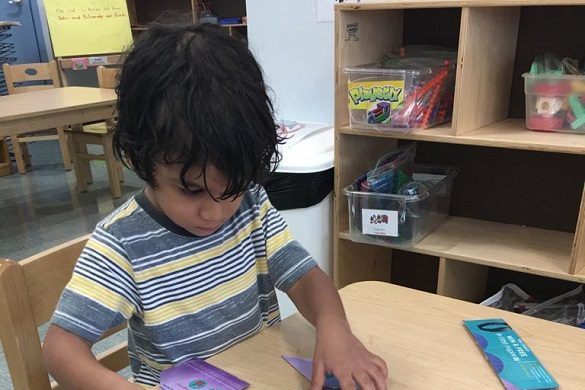Spatial Relations
Children rely on their spatial skills for lots of everyday tasks! They're thinking spatially when they navigate through their environments, interpret maps and diagrams, and put together puzzles and toys. Spatial thinking can also help children solve mathematical problems in unique ways, and early spatial skills lay an important foundation for children's later STEM learning. Our spatial games give children lots of opportunities to practice their spatial vocabulary (e.g., "in front of" and "around"), think about distance and direction, and explore perspectice-taking. Check out the fun, hands-on, and movement-based resources below!
Spatial Relations Sub-Topics
Spatial orientation skills help us find objects and locations in space. For example, to retrieve a backpack from the kitchen, we need to understand -- or orient ourselves to -- whether we're close to the kitchen or far away. Then we need to navigate to the kitchen, and to the backpack. This process also involves mental mapping: building mental imagery of objects and places. Mental maps allow us to "see" objects and places using our memory, and they help us give directions or describe locations accurately.
Spatial orientation skills develop early and grow with practice. Engage these skills in young children by asking them to describing their positions in space (e.g., "I'm sitting on the swing and swinging forwards and backwards!") or give them directions to follow (e.g., "Can you find the umbrella? It's in the upstairs closet, next to the jacket").
Spatial visualization skills allow us to see, analyze, manipulate, and match different shapes. Our spatial visualization abilities also help us mentally rotate objects, such as knowing that a block that is oriented horizontally needs to be rotated in order to fit into a vertical space. When children play with shape puzzles using blocks or pattern blocks, their skills are being engaged to copy and create pictures and symmetrical designs.
Representing real-world objects, places, and spaces using maps and models is an important spatial skill. Spatial visualization skills are a fun challenge for learners of all ages to develop! In early childhood, children need lots of practice with both creating and interpreting spatial representations, like models and maps, to exercise these skills. Help children draw maps of classroom or community spaces and ask them about what they see on the maps posted at parks and bus stops! With practice, children will begin to understand that the symbols they see within maps, models, and diagrams correspond to the real-world, even if the scale and perspective within the representation varies.



